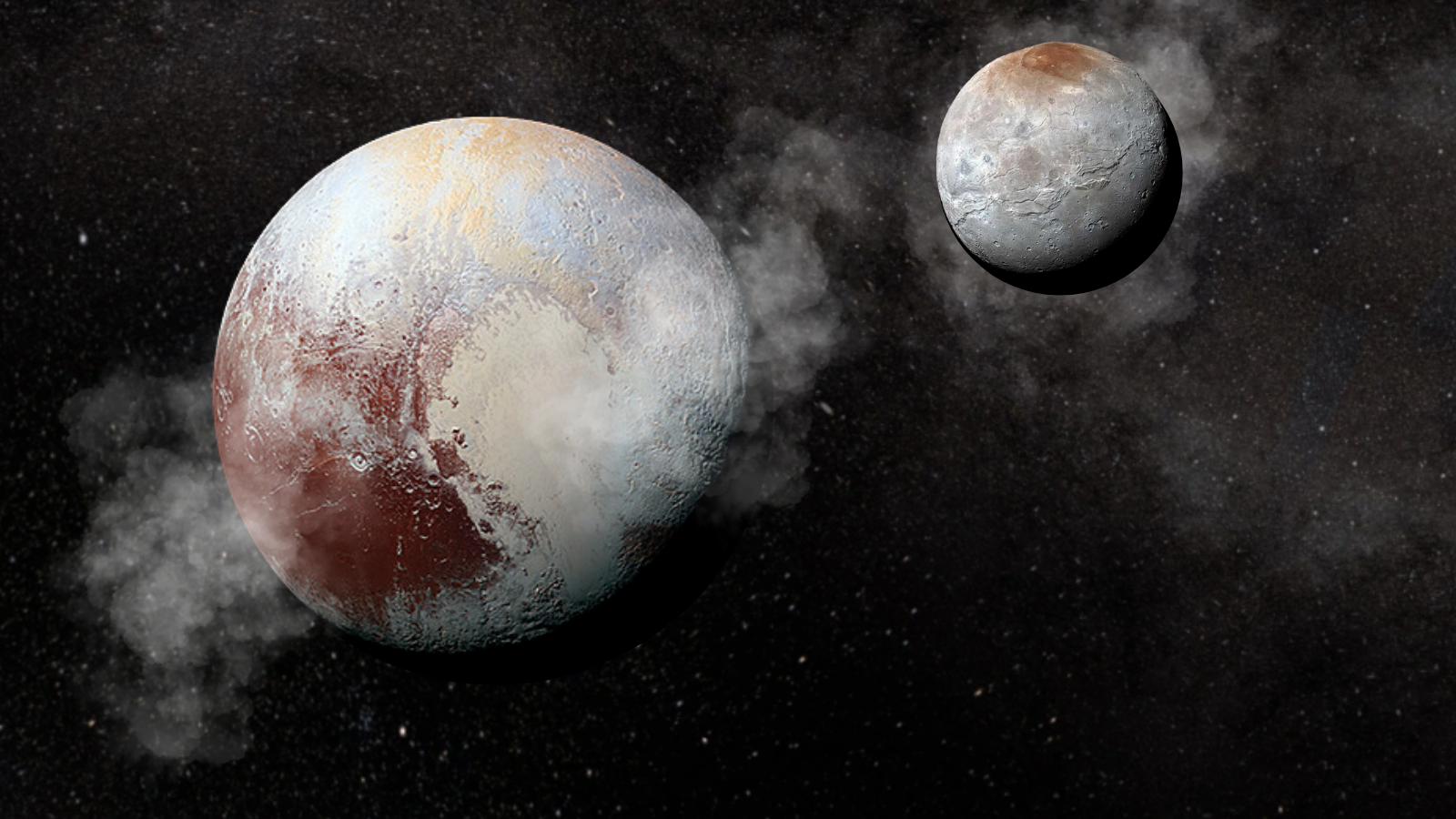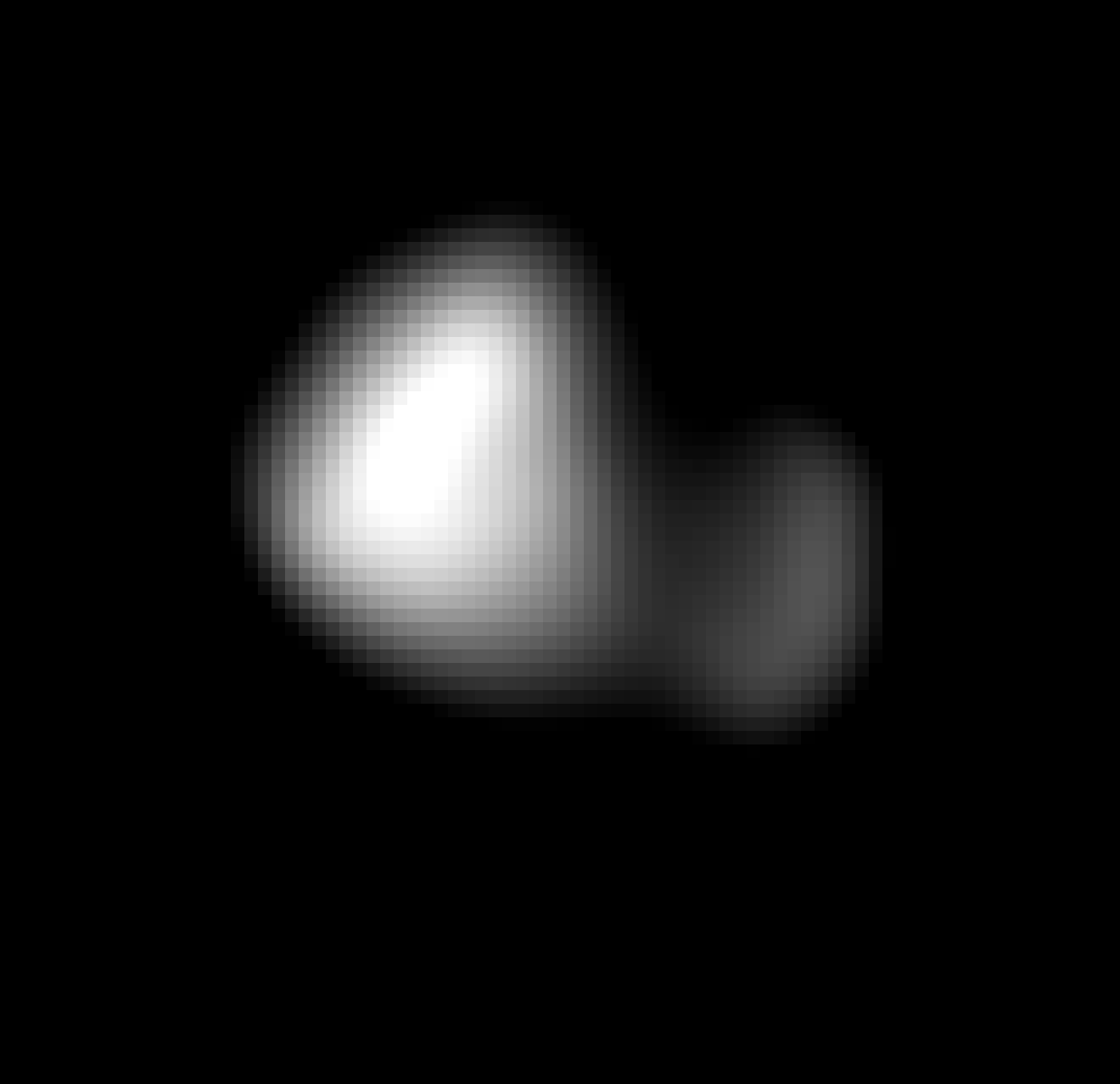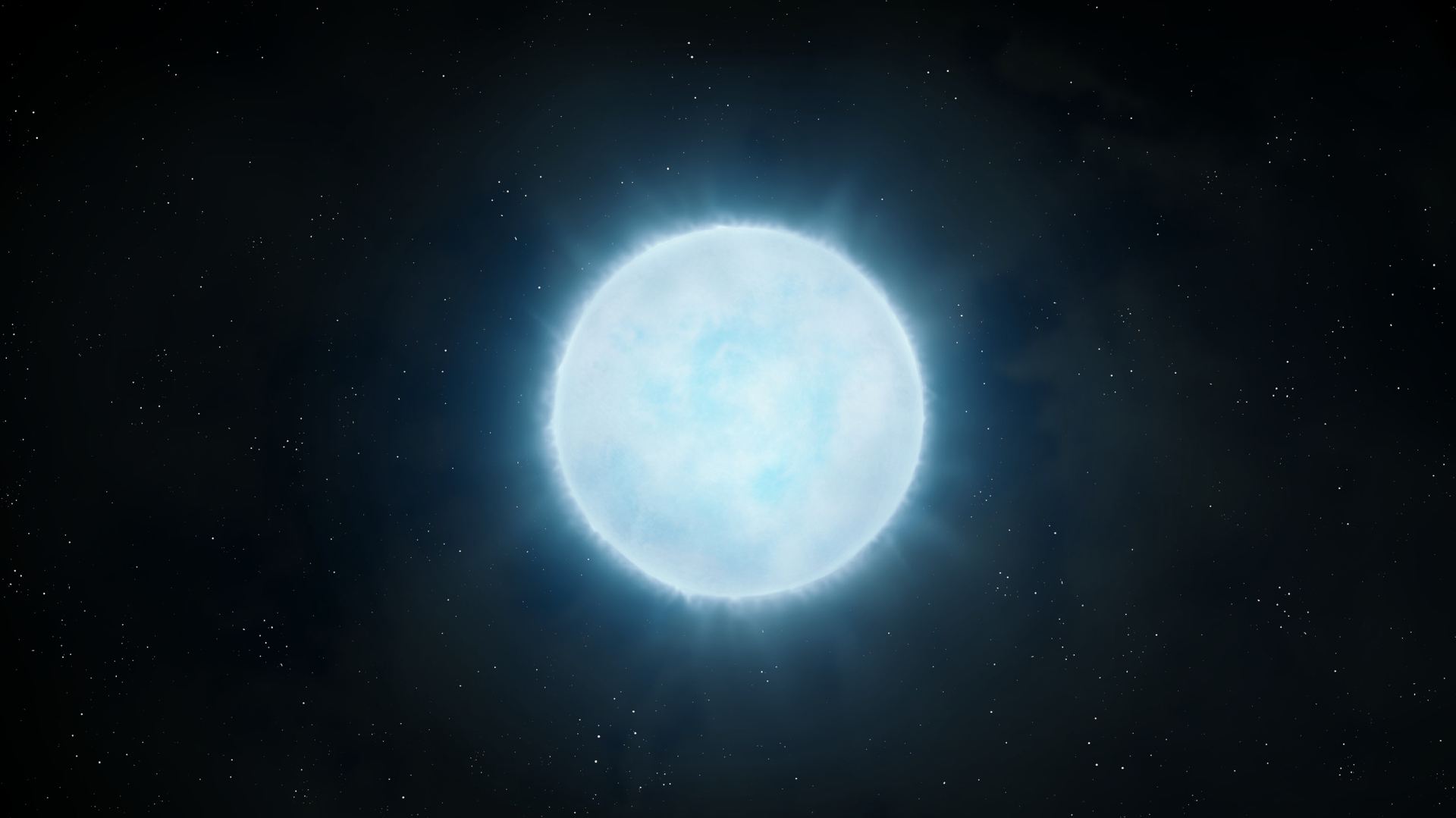New Pluto mission could uncover dwarf planet's hidden ocean — if the 'queen of the underworld' gets to fly
"This mission should be able to image the whole of Pluto. It should be phenomenal."

When NASA's New Horizons spacecraft sped by Pluto in 2015, it revealed an incredible world of ice and haze carved by various geological processes — hinting that an ocean may have played a role in the dwarf planet's recent history. The bounty of scientific riches has left researchers working to solve some of the tiny world's mysteries a decade after the spacecraft's flyby.
"There's still a lot of questions that are open," Carly Howett, a planetary scientist at the University of Oxford and a New Horizons team member, said last month at the Progress in Understanding the Pluto Mission: 10 Years after Flyby conference in Laurel, Maryland. With such questions lingering, Howett and her colleagues designed a follow-up mission in hopes of finally solving some of Pluto's mysteries.
Such a mission, sent to investigate the outskirts of the solar system, would span several decades. But it's far from being approved. "This mission could operate for over 50 years, challenging engineering, mission operations, and data analysis in ways that have never been done before," Howett wrote in a 2021 study published in the Planetary Science Journal detailing the mission concept.
A subsurface ocean?
In Roman mythology, Pluto is the god and ruler of the dead. For a return mission to the dwarf planet, Howett and her colleagues opted for the name Persephone, after Pluto's wife and "queen of the underworld" in Greek mythology.
"Given that Pluto is named after the Roman god of the underworld, and that we wanted a female name to reflect our diverse team with many women in leadership roles, this name seemed apt," Howett wrote.
Persephone would carry 11 instruments, all based on tools flown on previous missions but with some alterations. The primary question it would seek to answer would be whether Pluto has a subsurface ocean today.
If that question had been asked before New Horizons sped by, most scientists would have said it was unlikely. While many icy worlds may start off with a watery layer, it freezes over time. To remain liquid for the 4.5 billion-year life of the solar system, that ocean must stay warm.
Breaking space news, the latest updates on rocket launches, skywatching events and more!
Related: Supervolcano eruption on Pluto hints at hidden ocean beneath the surface
Some moons constantly flex as they gravitationally interact with their host planet and neighboring moons, keeping their ocean from freezing. Charon, Pluto's largest moon, is nearly as massive as Pluto; they are often called a "double planet" (though neither meets the criteria for a planet). Charon could potentially keep Pluto warm, if the ocean had a high enough nonwater component to lower its freezing point, scientists think.
It wasn't until New Horizons revealed the remarkably young, lightly cratered surface of Pluto that most scientists began to consider the possibility of an ocean (although some did before the spacecraft's arrival). New Horizons studied Pluto in depth for only a few hours, although it continued to observe the dwarf planet for months before and after its closest approach.
Persephone, by contrast, would aim to enter orbit around the tiny world for just over three years, allowing much longer close-up views. "There's no substitute for proximity," New Horizons principal investigator Alan Stern said at the same conference.
What Persephone would study
Persephone would study the shape of Pluto to hunt for signs of a telltale fossil bulge — a "beer belly" of sorts caused when gravity pulls on the mass of a world. Bulges form more easily when the layers are liquid, and they can be frozen into place. New Horizons didn't observe such a pileup, but Persephone would send a more sensitive instrument that could make a more detailed examination.
"This mission should be able to image the whole of Pluto," Howett said at the conference. "It should be phenomenal."
Persephone would also seek to determine the composition of Pluto and Charon, using gravity and topography measurements similar to those taken of Saturn's moon Enceladus, and potentially calculate the thickness of the internal ice layers.
Pluto suffers from a century-long winter, and Persephone would arrive in the thick of it. Much of the dwarf planet would be shielded in darkness, so the mission would require instruments capable of peering through the veil. Cameras would map the surface of the entire world in greater depth and in varying wavelengths, including the half that was shrouded when New Horizons sailed past. They would search for hotspots, signs of ongoing activity and eruptions that might indicate a warm interior, as well as look for indications that the surface has changed since the 2015 observations. They would also provide a more detailed crater count on both Pluto and Charon, which would help scientists better understand how active the Kuiper Belt has been over the years.
Although icy worlds abound in the solar system, both Pluto and Charon have unusual surface features. In Pluto's Tartarus Dorsa region, blades of methane ice cover the surface. Scientists suspect that these spikes formed by sublimation as methane skipped instantly from solid to gas, but that's not definitive. And Charon has a strange ice mountain submerged in a frozen moat — a unique feature among icy peaks. Both surfaces are covered with exotic ices, and an understanding of their properties at the frigid temperatures on Pluto would be a key component of the mission.
Related: James Webb Space Telescope deciphers the origins of Pluto's icy moon Charon
In 1988, astronomers spotted a wispy atmosphere around Pluto, but its composition eluded them. New Horizons answered questions even as it raised more. Curiously, it appears that Pluto is slowly shedding part of its atmosphere onto Charon, creating a distinctive red pole that may shift hemispheres over time. One of the key objectives of Persephone would be to perform a direct detection of the atmosphere's composition through mass spectrometry.
Persephone would also study the space around the tiny world. Pluto is so far away that light from the sun takes just over 5.5 hours to reach it. From Pluto, the sun is a point-like spot in the sky.
Charon wouldn't be the only moon targeted by the mission. Persephone's launch time would determine how many of the smaller moons it could observe, but it would likely get a good look at the four other satellites as well.
New Horizons revealed bands of water ice on Nix, Hydra and Kerberos, as well as hints of ammonia on Nix and Hydra. Persephone would take a more detailed spectra for these three, as well as Styx, and try to determine how much of their surfaces, along with Charon's, is littered with debris from the collision that likely formed them. Although the best observations of the smaller satellites would most likely be of the close-orbiting moon Styx and the worst of Pluto's outermost moon, Hydra, a flyby of either Kerberos or Hydra might be possible, depending on when the mission launched and arrived at Pluto.
Persephone would remain at Pluto for just over three Earth years. During that time, the spacecraft could use orbits around the binary system to ultimately fling it from the pair.
Extending the mission by one year would allow the spacecraft to visit another Kuiper Belt object, much as New Horizons visited Arrokoth after the Pluto flyby. Such an extension would depend on when the mission launched and arrived, but it could provide significant insight into the debris left over from the solar system's formation. This would provide a big scientific return, because the distance of Kuiper Belt objects makes them challenging to study from Earth.
Pluto: The next generation
A return to Pluto would not be a casual undertaking. While it took New Horizons less than a decade to make the original trip, the changes in planetary alignment would make the next visit's flight alone take just over 27.5 years and would require five Next-Generation Radioisotope Thermoelectric Generators (NGRTGs), nuclear batteries that use the decay of radioactive material to power the spacecraft. The trip's extensive lifetime would require several NGRTGs to keep things warm in the freezing temperatures of space. That's a big ask at a time when plutonium for spaceflight is still at a premium. Currently, NASA's goal is to create 1.5 kilograms of plutonium per year; current RTGs use 4.8 kilograms.
That would require a significant investment in plutonium for outer-planet exploration. It would also take a financial investment. The estimated price tag for the Persephone mission is $3 billion, Howett said in her presentation.
With the potential of a half-century mission, the spacecraft carries several backup systems. But Stern pointed out that, although the timescale is long, it's not unheard of. NASA's Hubble Space Telescope is still functioning after 35 years, and so are NASA's Voyager 1 and 2 spacecraft, which launched 48 years ago.
Another challenge for the Persephone mission relates to the people working on it. With the potential for a 50-year mission, the researchers estimate that Persephone would be a three-generation mission that would cycle through three sets of scientists over their career lifetimes. Information and training would need to be passed from one generation to the next. In fact, Stern said delayed engagement was one of the hardest parts of planning the New Horizons mission.
"We know how to do these things," Stern said. "You have to be patient, and you have to plan for it."
Launch opportunities for the spacecraft are available every year from 2029 to 2032. After that, Jupiter's orbit prevents subsequent opportunities for a full decade.
Persephone was part of NASA's Planetary Mission Concept Study, which funds a range of projects to permit the decadal study to make informed decisions about potential future missions.
"While I think any mission needing more than one RTG is going to struggle to get selected at the moment, I do think the process of doing the mission proposal was useful," Howett said. Not only did the proposal show that such a mission is valid, parts of it, such as the orbital tour, could be used by other missions.
But don't look for Persephone to fly in the near future: the power request alone may keep it off the official books. Howett's mission proposal was one of several requested to help inform NASA's decadal survey about priorities and viabilities of future missions.
But the space agency is continuing to work to improve RTGs and their supporting technology. Howett is hopeful that ongoing technology developments will improve the mission's odds.
"One of the things that Persephone showed was that returning to Pluto to orbit was possible, but it wasn't cheap," she said. "It would have to be a Flagship-level mission."

Nola Taylor Tillman is a contributing writer for Space.com. She loves all things space and astronomy-related, and always wants to learn more. She has a Bachelor's degree in English and Astrophysics from Agnes Scott College and served as an intern at Sky & Telescope magazine. She loves to speak to groups on astronomy-related subjects. She lives with her husband in Atlanta, Georgia. Follow her on Bluesky at @astrowriter.social.bluesky
You must confirm your public display name before commenting
Please logout and then login again, you will then be prompted to enter your display name.


